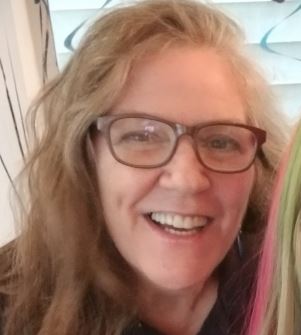Hiring tactics you can’t ignore if you need to keep up with call volume
minutes

In tight labor market, customer service talent acquisition gets competitive.
If finding and hiring great talent feels tougher than ever, it’s because it is.
The traditional applicant pool is dwindling, leaving less in the way of options for hiring managers looking to fill more jobs:
- Net job growth is averaging 170,000 positions per month.
- The gross rate at which workers are quitting is three million a month.
- The baby boomer effect: Every day, 10,000 boomers turn 65. This will continue into the 2030s.
- Total population growth rate is the lowest since 1937.
- The labor participation rate has declined from a high in the late 1990s.
This is happening against a backdrop with fewer workers seeking out the traditional “9-to-5” work arrangement.
Keeping up with shifting work environment expectations
Enterprise organizations, now more than ever, need hiring strategies and working arrangements carefully attuned to current realities. Otherwise, the bottom line will suffer.
“Business leaders who can win the talent war (and it is a war) will be able to say yes to new business opportunities while their talent-strapped competition will have to walk away, Robert Sher, author and leadership consultant, wrote in a column for Forbes.
“These hiring challenges will not ease anytime soon. It’s time to stop complaining about how you can’t find the right people and start expanding the profile of your workforce. Rethink traditional ideas about your employees’ ages, histories and locations,” Sher continued.
In order to have an edge in attracting workers, enterprise must recognize that expectations of the workforce are not what they were 10 or even five years ago.
Offering flexibility to attract high caliber talent and increase output
“Work as we know it is dead and the only way forward is to challenge convention around how we work, how we lead, and how we build our companies,” futurist Jacob Morgan says.
People want permanent flexibility at work. What that means is somewhat open to interpretation, but Morgan points to a myriad of characteristics: Today’s workforce seeks to customize work and will use new ways to communicate and collaborate, among other factors. His infographic on this is worth checking out:

Mercer’s 2018 Global Talent Trends Study echoes Morgan’s vision. Mercer found 51 percent of employees want their company to offer more flexible work options. When asked what would help them thrive at work, 40 percent said more flexible work options, compared to 26 percent last year.
Defining “flexible work” in your organization
Flexible work – whether the location, hours worked, or another facet can address the widening skills gap by allowing organizations to tap into a broader talent pool with a broader range of skills.
This is especially true when your approach to hiring and job requirements allow for remote workers. Seeking the best candidates, regardless of geographic location, immediately opens the door to a sea of untapped, highly-qualified talent: People historically shut out from hiring.
Hiring remote workers opens the door to an infinity pool of the most invaluable talent on the job market
We’re talking about caregivers, retirees, people with disabilities, veterans, moms, students and people living in locations too far to commute daily.
Caregivers, for example, likely need and want to work. An estimated 43.5 million people identify as caregivers in the U.S. Many of those likely would be interested in an opportunity to have a flexible work arrangement allowing them to work from home or another remote location on the days and during the hours they choose to work.
Retirees aren’t people most recruiters think of first when looking to fill a role. However, these workers are likely to bring an endless amount of characteristics, backgrounds, and deep work experiences most employers would value highly. Even though boomers are retiring in droves, more than a third want to work in retirement, according to AARP.
The Bureau of Labor Statistics estimates in the next eight years, the groups of workers 65 to 74 years old and 75 and up will have the fastest rates of growth among all ages.
Veterans and people with disabilities are underrepresented within companies, according to the National Organization on Disability. For instance, there are 30 million Americans with disabilities of working age but only 20 percent participate in the workforce. By seeking candidates in either of these pools, enterprise is likely to find fresh resumes.
Another enticing piece should be that data also show that veterans and people with disabilities stay at jobs longer.
If you still aren’t convinced about the need tune in your approach, here’s another reality: Millennials. Within the next seven years, they are estimated to constitute as much as 75 percent of the workforce.
While not among those historically “shut out,” this generation is tough to hire and retain. The key is flexibility. Millennials don’t see a point to being in the office and want to work from home whenever possible.
Where do I start to incorporate flexibility into my service experience?
Even if you don’t already have a flexible team or offer remote work options, don’t worry, you don’t have to build this from the ground up. Given that these hiring pressures are expected to persist for a decade or more, enterprise would be smart to choose partners well-versed in hiring for these realities. For those putting a high priority on customer care – notoriously challenging in any environment – Liveops can help.
Get started with the Blueprint for Successfully Deploying Remote Agents to learn more about how to successfully manage a customer contact program using virtual agents, with analytics and quality control to provide meaningful, measurable improvement in satisfaction and revenue.
Or, skip the guide and have Liveops build your remote client contact team. Leverage our expertise in supplementing your service and sales contact center with unlimited talent potential:
“Our business model enables us to deliver customer care that is measurably better because we have figured out how to source and retain talent that is consistently exceptional,” said David Greenberg of Liveops.
Liveops’ approach to talent embraces everything about what’s happening in the employment market right now. “We have customer care professionals with decades more experience, on average, than what companies typically source when they rely on old, geographic-based workforce models,” Greenberg said.
Liveops has a pool of customer care agents working all around the country. They have one thing in common – they love the work they do. It’s because they work from home according to a schedule they set, providing customer care for companies they’re excited about.
Liveops’s client roster is full of big, nationally known brands. Learn more.
Related Resources
Stop outsourcing, start outsmarting
Join the brands redefining customer experience with Liveops. Empathetic agents, tech-powered delivery, and the flexibility to meet every moment. Let’s talk.

Explore flexible customer experience solutions




